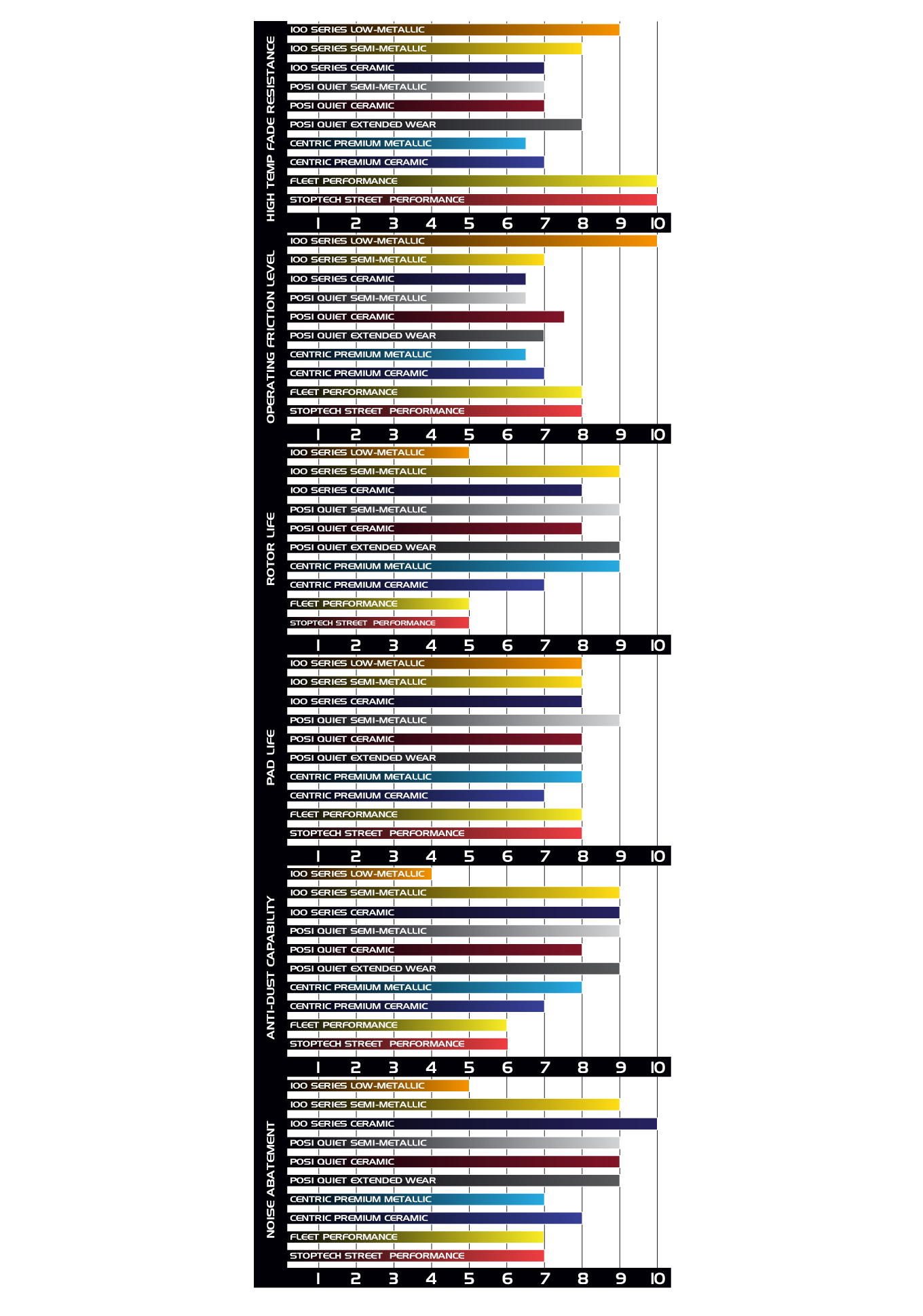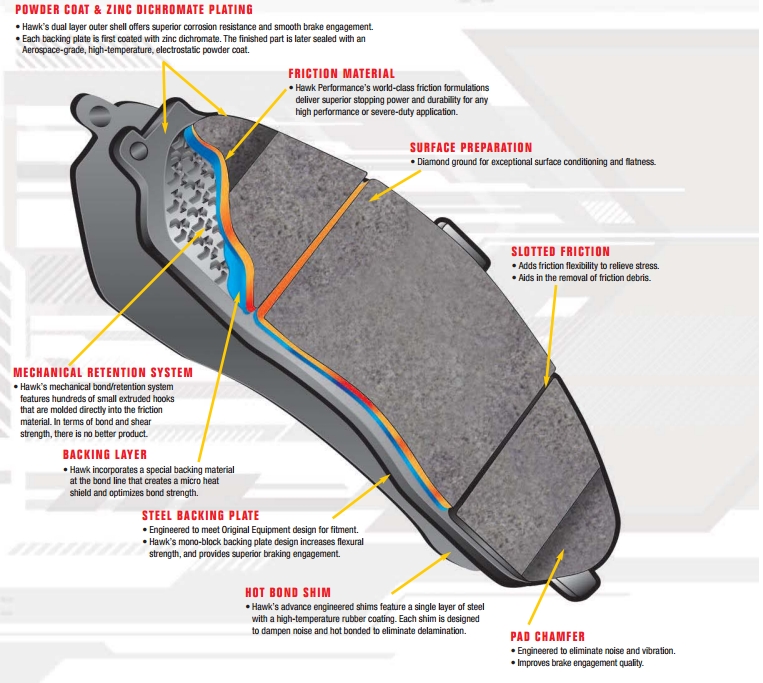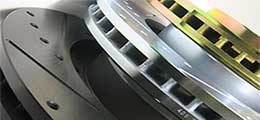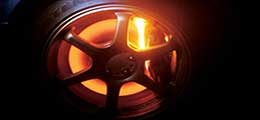 There are many choices when it comes to types of brake pads and friction materials. Generally, what you want are brake pads that are equivalent to original equipment as these brake pads are what the vehicle’s manufacturer recommends. However, it’s no secret that original equipment parts can be quite costly. Fortunately, there are many aftermarket brake parts companies which offer OEM equivalent or premium grade brake pads that may perform just as well, if not better than stock and at a better price point. This article is geared towards helping you identify and choose a brake pad that best suit your driving.
There are many choices when it comes to types of brake pads and friction materials. Generally, what you want are brake pads that are equivalent to original equipment as these brake pads are what the vehicle’s manufacturer recommends. However, it’s no secret that original equipment parts can be quite costly. Fortunately, there are many aftermarket brake parts companies which offer OEM equivalent or premium grade brake pads that may perform just as well, if not better than stock and at a better price point. This article is geared towards helping you identify and choose a brake pad that best suit your driving.
What are your options?
As mentioned earlier, there are many different types of brake pads: there are economy aftermarket brake pads, standard aftermarket brake pads, premium aftermarket brake pads and of course original equipment brake pads. Within these categories, there are materials differences such as metallic, semi-metallic and ceramic All of these brake pads will range in price and performance level.
Most aftermarket brake pad manufacturers are able to produce high quality friction materials and offer them at reasonable prices. Whether the brake pad material is metallic, semi-metallic or ceramic, each manufacturer has their unique friction formulas to meet the performance criteria of their customers. For the sake of marketing, these brake pads are generally labeled as a certain type of material and the actual formula is not disclosed. For instance, if a company offers a brake pad labeled as ceramic, you know that it is composed of ceramic material mixed with copper fibers and maybe other materials. The ratio of ceramic and other substances in the material would be unknown or undisclosed and different companies use different formulas. The reason for this is because friction formulas play an important role, not only with stopping performance, but qualities like producing low amounts of dust and decreasing noise levels. Therefore, it is in the company’s best interest to keep this information private for competitive reasons. So, which friction material is best for you?
Choosing a friction material

Photo source: www.buybrakes.com
For starters, go with a friction material that comes standard for your vehicle platform. Most vehicles have standard equipped, semi-metallic brake pads. This is particularly true for European made vehicles, performance applications and heavy or fleet applications. The reason behind this is because these vehicles need brakes with a lot of stopping power and to perform well at higher temperature ranges. This is not to say that all of these applications need semi-metallic pads. What makes a difference is how a person drives. If a person lives in an area that has infrequent stops or if a driver has a more defensive driving style, a ceramic brake pad may be better. Ceramic brake pads have been rising in popularity because they perform particularly well for street, commuter applications. In fact some vehicle manufacturers are switching to ceramic formulas as OE because of this. Ceramic brake pads typically come standard on Japanese vehicles and are popular for their low dust and noise capability. They are usually the longest wearing compared to metallic or semi-metallic brake pads because although ceramic pads can work well within a wide temperature range, for higher temperatures, ceramic brake pads transfer excessive heat to the brake rotors. In other words, if a ceramic brake pad gets too hot, the heat is transferred to the brake rotor. The brake rotor has to compensate for the extra heat and as a result will wear sooner compared to a rotor paired with a semi-metallic pad.
How to Tell Good Brake Pads from Excellent Brake Pads
Economy aftermarket brake pads (good) – there are usually less manufacturing processes and hardware involved with these brake pads compared to their standard, premium or OE counterpart. For example, brake pads are made including other components aside from just the friction material. These other components are the shims, the backing plate and other hardware for installation and noise reduction. Economy brake pads typically provide only the bare minimum and do not have shims, which helps with noise reduction. The main brake pad components (backing plate and friction material) are made separate from each other and then bonded together to make the finished product. The issue with this is that this can leave room for inconsistencies in the friction material and the brake pad as a whole, which may result in ordinary wear characteristics or low friction levels. At the end of the day, economy brake pads are adequate and are more catered for those working with a limited budget. These brake pads are absolutely not suitable for high performance applications as it would not be able to handle the heat.
Standard aftermarket brake pads (better)— These brake pads usually have a bit more hardware that would make them superior to an economy brake pad, but not the more advanced manufacturing processes to make them a premium brake pad or OE equivalent. Standard brake pads normally include shims for noise reduction which economy brake pads do not have. They may be more durable and have better wear qualities in their friction formulas. However, standard brake pads are typically put together using the same standard bonding manufacturing processes as economy brake pads, which again, can affect performance ability.
Premium aftermarket/OE brake pads (best)—Premium aftermarket or OE brake pads usually include more advanced manufacturing processes that allow for the brake pad to be more consistent and better performing part. One example is a positive molding process which is used by OE manufacturers. This positive molding uses extreme pressure to compress the friction material and bond it to the backing plate. This process assures consistent friction material density throughout the pad, resulting in even wear and performance characteristics throughout the life of the brake pad. These brake pads will most definitely include shims and will sometimes include additional hardware for proper installation as well. Furthermore, these brake pads may be scorched or “broken in” for you and are ready for immediate, normal use right after installation.
Steps to Help you Choose a Friction Material for your Application
First, determine what type of friction material came standard for your vehicle. This information can normally be found by contacting your OE manufacturer or calling a local parts store. After you have found this information, assess how well these brake pads worked for you. Ask yourself questions regarding the characteristics of the brake pads. Were your brake pads noisy? Were your brake pads dusty? How long did the brake pads last? Basically, what type of issues did you have or not have? Once you have answered these questions, you can then take the steps to find a better alternative or stick to what works. If your brake pads worked fine then as the saying goes “if it is not broken, do not fix it.”
In the end, how well and how long your brake pad performs also depends on your vehicle and your driving habits. If you drive more aggressively, you may consider getting nothing less than an aftermarket premium brake pad or OE brake pads in a semi-metallic formula. If this does not perform to your standards, there are also ultra premium upgrades for brake pads that are available. One important thing to realize is there is no point in upgrading brake pads if they are not being used at the friction levels they are meant for. For example, if you have a street commuter vehicle and you are looking to upgrade your brake pads to an ultra premium line, instead of being beneficial for you this may actually be worse. Brake pads are designed to work optimally in certain temperature ranges. The more premium the brake pad, the higher heat threshold they have or wider temperature range at which they can perform well.








Ed SC
posted on May 6, 2021 5:48:42 PM